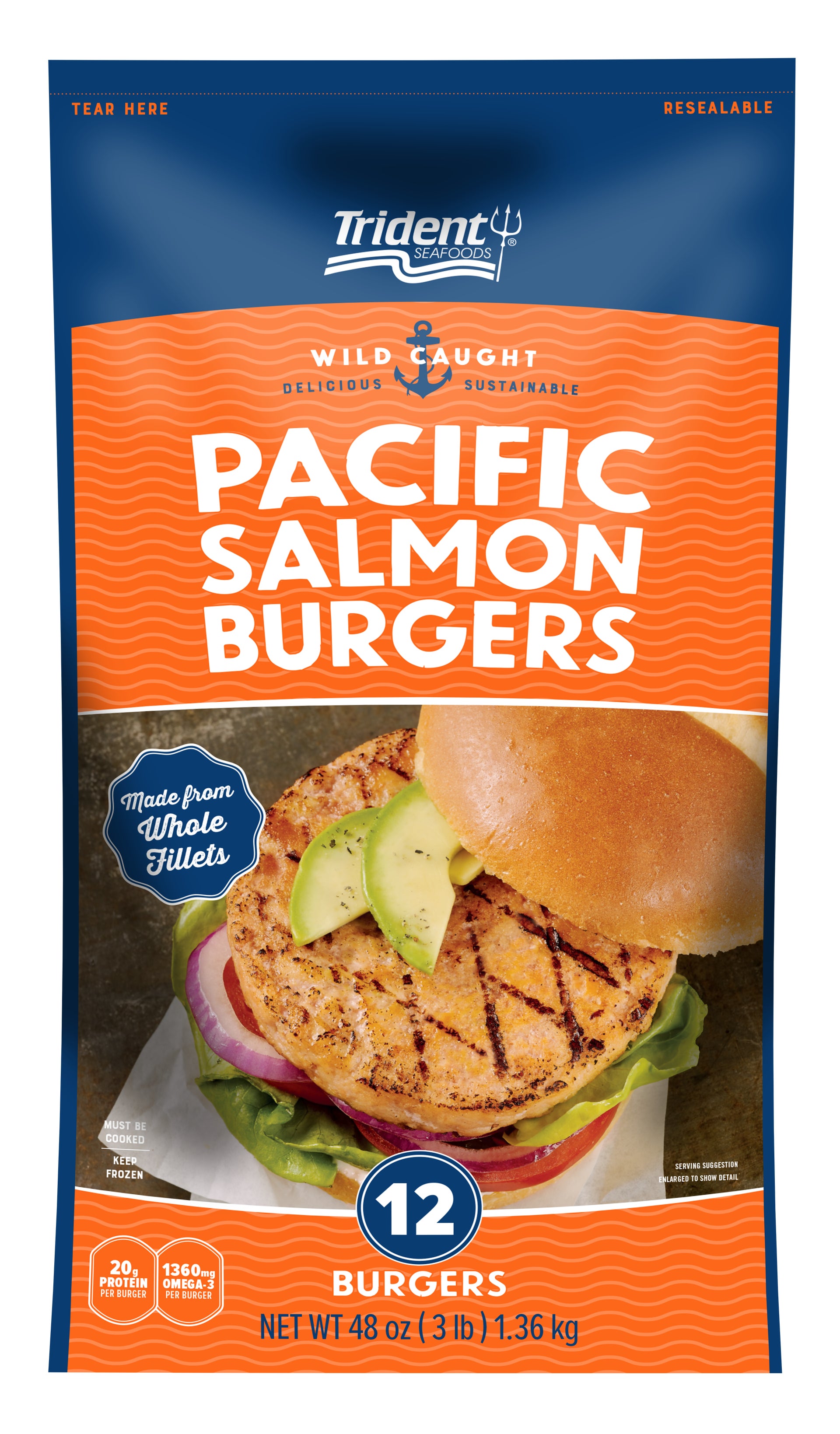
Trident Seafoods®
Beer Battered Alaska Cod
40 oz

Trident Seafoods®
3 lb
A delicious and nutritious alternative to traditional burgers and sandwiches, Trident Seafoods® Pacific Salmon Burgers are a great choice. GLUTEN FREE!
On a bun In a wrap or pita with coleslaw In your favorite fish taco recipe In an open-faced sandwich Flaked and added to an omelet
Thawing is not recommended – cook from frozen. GRILL OR BARBEQUE: Preheat to medium heat (350° F). Cook for 4 to 5 minutes on each side. CONVENTIONAL OVEN: Preheat to 400°F. Place frozen burger(s) on lightly greased baking sheet, cook for 9 to 10 minutes on each side. PAN FRY: In lightly oiled pan, cook over medium heat 4 to 5 minutes on each side. AIR FRYER: Set air fryer temperature to 400°F. Place desired amount in a single layer, do not overcrowd. Cook for 12 to 13 minutes, flipping halfway through. Microwave cooking is not recommended. * Cooking times and temperatures may vary substantially. Internal temperature should be at least 165° F. We strive to produce a fully “boneless” product. As with all fish, however, occasional bones may still be present.
Designed to cook from frozen.
PINK AND/OR KETA SALMON, VEGETABLE OIL (SOYBEAN AND/OR CANOLA), WATER, CONTAINS 2% OR LESS OF: GROUND ONION, SALT, POTATO EXTRACT, GARLIC POWDER, MUSTARD FLOUR, WHITE PEPPER, BEET JUICE (COLOR), ANNATTO (COLOR), ROSEMARY EXTRACT, MESQUITE SMOKE FLAVOR, LEMON JUICE FROM CONCENTRATE. CONTAINS FISH (PINK AND/OR KETA SALMON).
“I get those at Costco pretty often - turn out great on grill or cast iron pan! ”
“These are wild salmon burgers are a delicious, convenient and favorite way to get lots of Omega-3s, protein and flavor. We always buy these at Costco, so please keep these in stores so we can keep them in our freezers!”
“THE best salmon burgers I’ve ever had!”